Little-known pages from the history of the birth of the Russian armored fleet
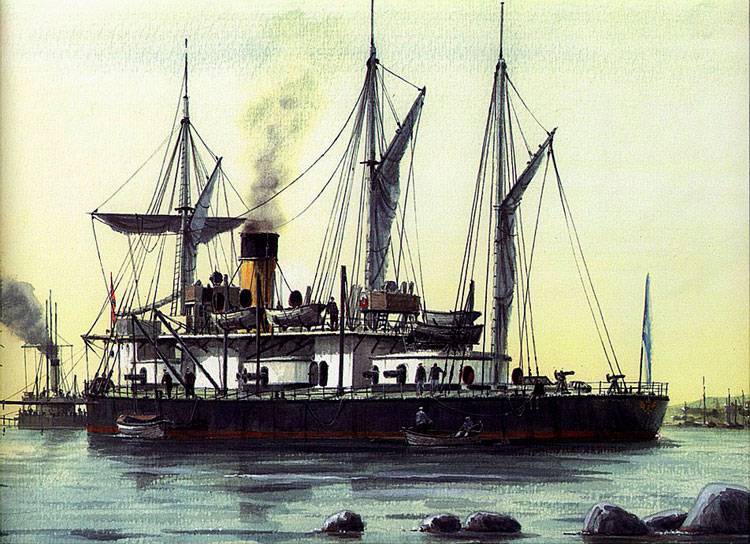
In the middle of the XIX century, the Russian fleet had perfectly trained sailors, officers and talented naval commanders, however, it was somewhat lagging behind in the ship composition and new armament, therefore during the Crimean War 1853-1856. the sailing Black Sea Fleet could not withstand the larger and more numerous steam vessels of the Anglo-French squadron. The winners at Sinop were forced to sink part of their ships at the entrance to the Sevastopol Bay and fight on land.
Meanwhile in fleets England, France and the United States, as a result of the rapid development of industry, including shipbuilding, armored ships with rifled guns and new types of ammunition began to appear. Official representatives of the Russian fleet abroad (naval agents), who closely followed the unfolding armored shipbuilding in Europe and America, informed the Russian military department of this in a timely manner.
Considering the bitter experience of the 1853-1856 war, the maritime ministry sought to eliminate the backlog of the Russian fleet, therefore it allocated a significant proportion of its extremely limited budget funds for the construction of battleships and for research on the creation of ship armor. As a result, the gunboat Experience was launched in 1861 the first Russian metal armored vessel that had a displacement of 270 t, length 37,3 m, width 6,7 m, speed 8,5 knot, armor thickness 114 mm. They built it in four months, which was a significant achievement in those times. When tested, Kanlodka showed satisfactory running and fighting qualities. At the same time, according to a project developed by Russian engineers, a second armored vessel was ordered in England - the first-born floating battery. In addition, in Kronstadt, following the example of the French, wooden frigates Sevastopol and Petropavlovsk began to sheathe the armor, converting them into armored ones.
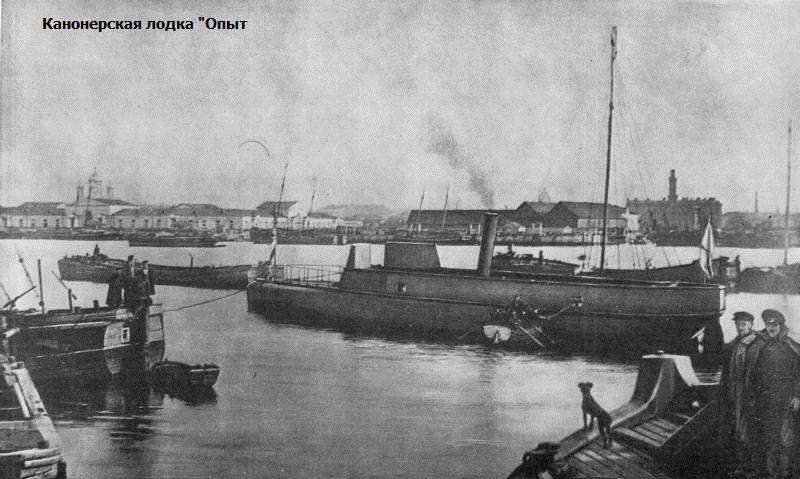
But these efforts of the maritime department were clearly not enough to meet the needs of the fleet dictated by state interests. Therefore, the tsarist government was soon forced to begin the development and implementation of a large military shipbuilding program. This was demanded by the international situation: Britain and France, taking advantage of the revolutionary movement in Poland, intervened in Russian internal affairs and by their actions created the threat of a new war.
In the most dangerous situation, in the event of the outbreak of hostilities and the attack of enemy naval forces, Kronstadt and Petersburg would be found, since without ship support from the sea it was impossible to repel the attack of armored ships armed with rifled artillery. The leaders of the maritime ministry said that "the latest revolution in shipbuilding has completely changed the attitude of the naval forces of Russia to the forces of foreign naval powers ... war with the naval powers is currently impossible for Russia." With their conclusion that Russia is in a position "defenseless from the sea," the Special Committee, consisting of representatives from various ministries and departments, agreed.
In this situation, there was only one way out - in the shortest possible time to create an armored squadron on the Baltic Sea. For this purpose, the government has allocated an additional 7 million rubles to the fleet. With the funds allocated, it was decided to purchase armored vessels abroad, equipment for shipyards and the necessary technical documentation. The implementation of the decision was assigned to a specially selected group of naval officers who had extensive experience in ship service, were well versed in shipbuilding and were fluent in foreign languages. At the beginning of 1862, all of them were assigned to the positions of marine agents in England, France, Belgium, Denmark, the USA and other countries, having been assigned the task of special state importance: to force the fulfillment of already made Russian naval orders and place new ones, study the technology and experience of armored shipbuilding and combat capabilities of battleships. The general management of this trade and diplomatic event was entrusted to Rear Admiral GI. Butakovu.
The largest group (14 people), headed by the captain 1 rank S.P. Schwarz and Lieutenant-Captain A.A. Kolokoltsev was sent to England, where she immediately faced enormous difficulties. The fact is that the British, guided primarily by political motives, in every way hampered the fulfillment of orders from Russia, including the construction of the Pervenets battery. Fearing that in a certain situation the British government might confiscate these orders (a similar precedent already occurred before the start of the Crimean War), the Russian naval ministry decided to ship its water battery to Kronstadt.
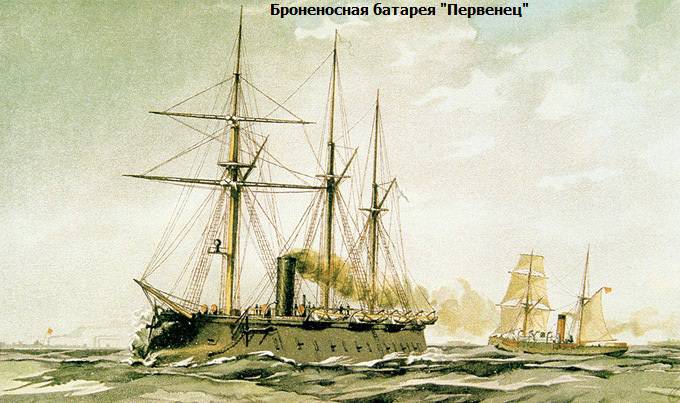
New orders for battleships could not be made either in England or in other European countries because of the long lead times, the exorbitant cost or the technical imperfection of the proposed projects. Thus, the main goal set for marine agents in Europe - the acquisition of battleships - was not achieved.
Other circumstances in America, where at that time there was a civil war. Captain 1 of the rank of SS was sent by the sea representative to the USA. Lesovsky, "one of the most excellent and capable officers of the fleet," as Admiral Crabbe characterized him in a letter to the Russian ambassador in Washington E.I. Glass An assistant was offered to pick him up himself, and Lesovsky chose a well-known ship builder, captain of the naval engineer hull N.A. Artseulov, who distinguished himself in the construction of the Abrek, Rider clippers, Varyag and Vityaz corvettes, and other vessels. Before departure, both officers received detailed instructions from the technical committee, the artillery department, the shipbuilding and other departments of the maritime ministry. In addition, they carefully studied the state and capabilities of domestic shipyards, as well as the results of research conducted in the field of armored shipbuilding and rifled artillery.
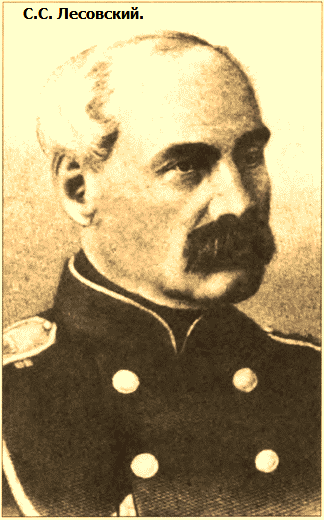 On the way to the USA, Lesovsky made a stop in England to learn English experience in the construction of battleships. He outlined the results of his stay in this country in a detailed report from July 30 of 1862 of the year, in which he pointed out many of the shortcomings of the British in this field. "... I did not leave England with a margin of rational positive data," he wrote, "but, on the contrary, in the most shaky perplexity of everything seen, heard and read ... Experiments have fallen into the shield of the unsatisfactory mounting system for plates of armor, but meanwhile, on all the new ships it was supposed to mount the slabs as before. ” Of low opinion, he remained about Armstrong's English naval guns, mounted on armored vessels without sufficient working off. In views on the classification of ships and the tactics of the use of battleships, at that time there was no unity even in the English admiralty itself.
On the way to the USA, Lesovsky made a stop in England to learn English experience in the construction of battleships. He outlined the results of his stay in this country in a detailed report from July 30 of 1862 of the year, in which he pointed out many of the shortcomings of the British in this field. "... I did not leave England with a margin of rational positive data," he wrote, "but, on the contrary, in the most shaky perplexity of everything seen, heard and read ... Experiments have fallen into the shield of the unsatisfactory mounting system for plates of armor, but meanwhile, on all the new ships it was supposed to mount the slabs as before. ” Of low opinion, he remained about Armstrong's English naval guns, mounted on armored vessels without sufficient working off. In views on the classification of ships and the tactics of the use of battleships, at that time there was no unity even in the English admiralty itself.Upon arrival in the USA, S.S. Lesovsky was immediately introduced to President Lincoln, ministers and prominent congressmen, who were sympathetic to his responsible mission. The representative of the Russian maritime department was promised all possible assistance as a sign of gratitude for the fact that Russia took a firm position of non-interference in the internal affairs of the United States and hindered the implementation by England and France of the intervention in America.
In the United States at that time there was no technically sound military shipbuilding program. Government orders totaling $ 20 million were spontaneously placed on private industry. Lesovsky then had more than once to observe how many inventors and businessmen besieged government agencies, including the navy ministry, seeking to enlist the support of officials, congressmen, ministers, and even the president himself, in order to get a military order. The lucky ones who managed to do this, sometimes in a matter of months, made millions in supplying weapons, often imperfect and requiring lengthy refinement.
Having received the official permission of the American authorities to visit shipyards and study the entire complex of armored shipbuilding, the Russian officers immediately set to work. Understanding the special importance and urgency of the assignment, they worked almost all day and night: they inspected factories, shipyards, shipyards during the day, and at night they recorded and traced those constructions that they saw at the factories, made reports to St. Petersburg.
Artseulov, who suffered from heart disease, often did not withstand such tension and literally fell, losing consciousness. Lesovsky brought him to his senses, and after a short rest they continued to work. Both understood that they were ruining their health, but they could not have acted otherwise. Later Stepan Stepanovich Lesovsky wrote about this period of their life: “... or it was necessary to refuse, or to work until complete neglect about his health."
A few months later, Russian officers knew the design and manufacturing techniques of battleships under construction, as well as the equipment of shipyards and shipyards. In addition to shipbuilding enterprises, they also studied artillery and powder production. During this time, SS Lesovsky and N.A. Artseulov visited many industrial centers of America: Boston, New York, Philadelphia, Baltimore, Pittsburgh, St. Louis, Keiro, Cincinnati, etc.
However, despite the sympathetic attitude to the mission of Russian seamen by the US President Lincoln, members of Congress and the government, as well as their permission to study armored shipbuilding, American businessmen tried to prevent them from becoming familiar with the production technology, organized a thorough surveillance of Lesovsky and Artseulov, creating these many difficulties in their work. And only thanks to the unique abilities of Nikolai Aleksandrovich Artseulov this obstacle could be overcome. This is how S.S. Lesovsky about his comrade in the report to the naval minister in St. Petersburg: “Captain Artseulov accompanies me on all my trips, and, having seen his daily active assistance, his promptness in understanding the blueprint, which cannot be stopped for a long time, I consider it my duty to express my gratitude for his appointment to me in the staff. In addition, Mr. Artseulov still has a talent ... to draw on the memory of what he saw at the plant, while preserving the dimensions with extraordinary accuracy. "" There was no exaggeration in these words. Drawings made by Artseulov during a business trip to America and stored in the TsGA of the Navy, even now, according to experts, they strike with perfection of execution.
Lesovsky paid much attention to the combat use of battleships. To this end, with the permission of the American government, he traveled to the Mississippi River in the area of Viksberg, where there were especially fierce battles with the participation of naval forces on both sides. Being on the battleships of northerners, he had the opportunity to assess their fighting qualities, to identify strengths and weaknesses. Ss Lesovsky, in addition, studied the tactics of using the armored fleet during the blockade of the US Atlantic coast. And in January 1863, he received an invitation to attend the artillery tests of the newest battleship Montok.
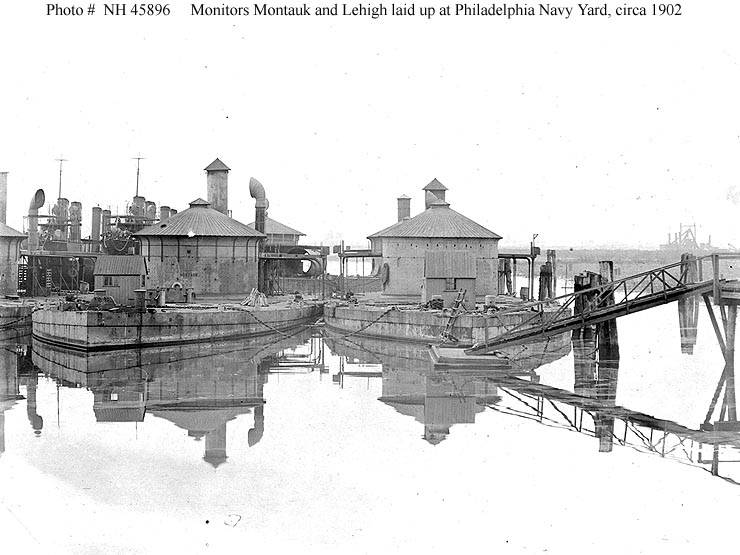
In connection with the reports of the American press that when firing from Dalgren's rifled guns mounted on this battleship, eardrums burst at the gunmakers and Lesovsky begins to shock, Lesovsky decided to personally experience the effects of the shots. During firing on the shield, he alternated in the tower, the wheelhouse, on the deck and made sure that in the tower the effect of air shaking on those present when fired, no more than the similar action "in the ship's deck from our ordinary guns." Then on the same battleship in stormy weather, he made a test voyage along the Atlantic coast from New York to Fort Monroe to test the ship’s propulsion. Lesovsky was the only foreign officer who managed to be present during similar trials during the civil war.
After analyzing and comparing the information received from sea agents from Europe and America, the Russian maritime ministry decided to purchase from the Americans ships of the “Monitor” type, as the most suitable for protecting Kronstadt. Lesovsky was ordered to urgently sign contracts for the construction of monitors. To help him sent three more specially trained officers. However, having found out there possible terms of manufacturing ships, Lesovsky suggested that the ministry should not order battleships in America, but build them in Russia in a shorter period. Not stopping the negotiations with the Americans, he sent his assistant with all the drawings and calculations to St. Petersburg for a personal report to the government.
On the basis of the report submitted, the Ministry of the Navy decided to build ten one-tower monitors of the “Uragan” and “Typhon” types at domestic plants under the guidance of N.А. Artseulov. Hard work began on the creation of a technical base for armored shipbuilding. New factory buildings, boathouses, workshops were built. It was necessary to ensure the receipt of materials, machines, train thousands of artisans. One of the most important tasks - making armor - was assigned to the Izhora and Kronstadt plants, which were selected by competition. Monitoring the production of armor steel throughout the production line, starting with checking the quality of ore at the Ural mining plants, was carried out by naval officers who had received special training at the mining institute.
The construction of armored ships was highly classified. It was conducted in the New Admiralty, on the Galerny Island, the Baltic, Nevsky, Izhora Plants, as well as at the Byrd and Kudryavtsev plants, where a special access control was introduced. The work went on around the clock (at night - by the light of lamps and torches), without interruption on weekends and holidays. The construction of ships actively involved their future crews, whose work was combined with combat training. A life-size model of the tower and the engine room of the monitor was built on board the training of personnel (new ships had length 61,3 m, width 14 m, displacement 1566 t, speed 6-7 nodes, armament: 2 - 381-mm guns, subsequently replaced on 229-mm).
Despite the exceptionally high rate of work, it was clear that the battleships could not be launched into the 1863 navigation of the year. Meanwhile, relations with Britain and France deteriorated, the war could break out at any time. It was necessary to prevent its outcome, at least until the onset of winter, when the waters of the Gulf of Finland would be icebound and would become impassable for enemy ships. To this end, the naval ministry developed a plan to send two squadrons, Pacific and Atlantic, to the ocean cruising, from wooden screw vessels under the command of rear admirals A.A. Popova and S.S. Lesovsky to strike at the trade communications of England and France in the Pacific, Atlantic and Indian oceans, in the event of the outbreak of hostilities. The plan was so bold and successful, and the execution was so brilliant that England, and then France, were forced to abandon armed aggression against Russia.
This allowed ultimately to successfully execute the shipbuilding program. In the 1864 navigation of the year, the waters of the Baltic Sea were already projected by a formidable armored squadron of the Russian fleet. The path to the capital to the enemy ships was closed. Unfortunately, it was not possible to finish the construction of the monitors personally. 28 November 1863 of the year Nikolai Alekseevich Artseulov on the 47 year of life suddenly died from a broken heart on the stocks of a ship under construction. He was buried at the Mitrofanievsky cemetery of St. Petersburg. In 1864-1865, shipbuilders N.G. After the death of Artseulov in just one year, Korshikov, Kh. V. Prokhorov and others completed the construction of ten armored monitors “Uragan”, “Typhon”, “Sagittarius”, “Unicorn”, “Battleship”, “Latnik”, “Koldun” designed by him , "Perun", "Veschun", "Lava" and "Unicorn".
The complex set of activities carried out by the Russian maritime ministry, in the short period of time unprecedented for that era, reorganized the country's military shipbuilding industry, provided the technical base for armored shipbuilding, and created the first squadron of monitor battleships to protect Kronstadt and St. Petersburg.
The successes of Russian shipbuilders attracted the attention of European and American states. Their experience began to study carefully abroad. In 1864, the United States Naval Ministry requested the Russian government to send feedback to S.S. Lesovsky of the American battleships, as he objectively and impartially assessed their qualities and noted "the initial shortcomings of these vessels." The critical remarks of the Russian officer were taken into account by the Americans in subsequent ship structures.
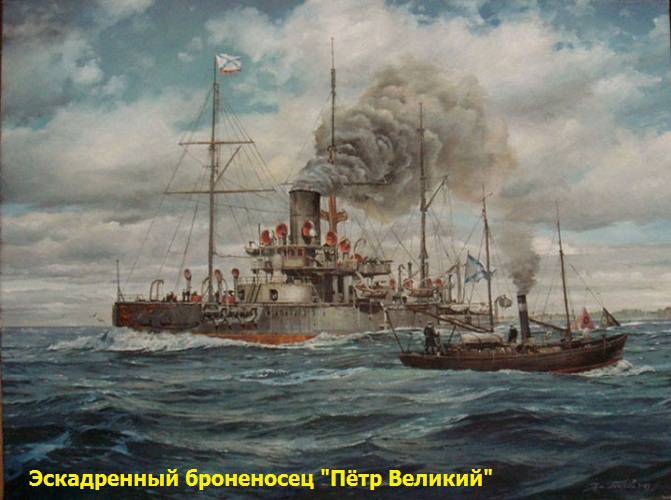
Russian shipbuilders continued to improve the domestic armored shipbuilding. Launched in the 1872 year, the new ship Peter the Great, designed by A.A. Popov, was recognized by all countries as the best battleship of the world at that time. When the Russian battleship went to 1881, the year to his first great voyage in the Mediterranean, the attention of naval specialists in many countries was attracted to him. One of the most famous British shipbuilders, engineer Reed, wrote in the Times, that the Russians had surpassed the English, both in terms of the combat strength of existing ships, and in terms of new methods of construction, and Peter the Great is a more powerful ship than any of the English battleships. Thus, the Russian technical and naval thought of the second half of the XIX century could have a significant impact on the development of world shipbuilding and naval art.
In conclusion, it should be said that the life of SS Lesovsky was longer than N.A. Artseulov, and has developed quite successfully. In 1864, he became the military governor of Kronstadt, in which, thanks to his vigorous activity, the city's water supply system was built, gas was supplied, new barracks were built. From 1 in January to 1876 through 23 in June, 1880 Lesovsky held the post of Marine Department Manager, who left of his own accord due to misunderstandings in relations with China to lead the Pacific Squadron. From 1880 to 1884, Stepan Stepanovich was the chief commander of naval forces in the Pacific. And with 1882 - Head of the Commission for the revision of the Maritime Charter. He died in the 1884 year, a month after his retirement, with the rank of full admiral for health reasons. Buried ss Lesovsky was at the Novodevichy cemetery in St. Petersburg.
Sources:
Zolotorev V., Kozlov I. Construction of an armored fleet of coastal action // Three centuries of the Russian foto. SPb .: Polygon, 2003. C.414-434.
Kolesnikov I., Kuzinets I. Naval engineering dynasties // Sea collection. 1998. No.1. C.67-72
Vrubel V. Iz stories construction of the first Russian battleships. // visage 1987. No.7. C.95-102.
A group of authors. History of naval art. Military Publishing. 1969, C. 67-72
Smirnov G. The genetic phenomenon of Aivazovsky // Technique-youth. 2008. # 10. C.62.
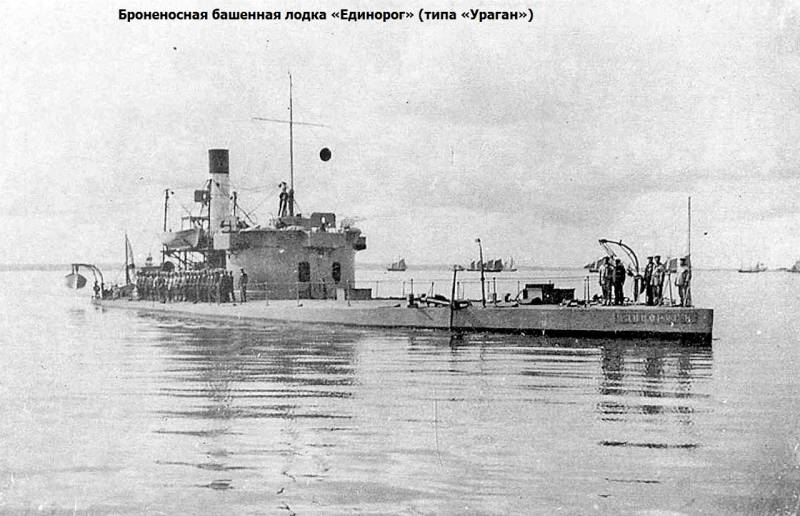
Information